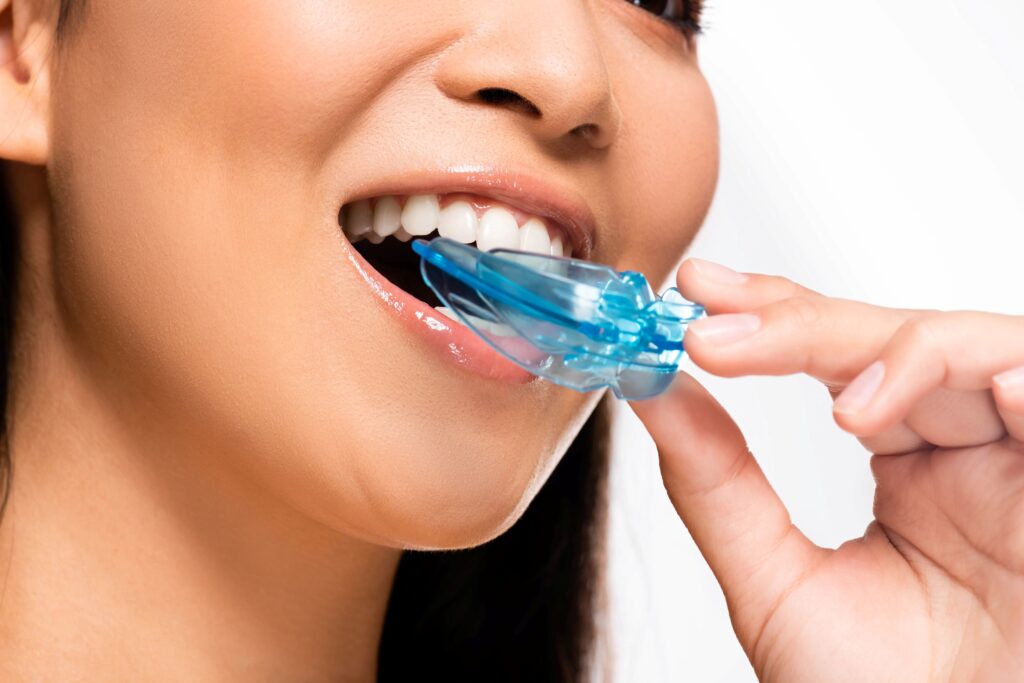
If you’ve been suffering from sleep apnea, receiving a diagnosis is only the first step towards recovering a peaceful night’s rest. Once you know what you’re dealing with, the next step is to address it! Thankfully, your sleep dentist can help provide you with an oral appliance that positions your teeth and jaw in a way that keeps your airway open at night so your natural nightly patterns aren’t interrupted.
However, many patients worry that they won’t be able to zonk out with dental work in their mouths. Continue reading to learn more about adjusting to life with your oral appliance to overcome your sleep apnea!
What is Obstructive Sleep Apnea?
This chronic condition occurs when your upper airways narrow or collapse during your circadian cycles, resulting in pauses in your breathing that interrupt your sleep stages. While it can’t typically be reversed entirely, your dentist can provide solutions to keep your air passages open so you can rest more soundly.
For instance, many patients receive a CPAP (Continuous Positive Airway Pressure) device that delivers a steady stream of pressurized air through a facial mask worn at night. While this method can be quite effective, it’s not the best solution for everyone’s unique circumstances. Some people struggle with dozing off with a machine working on the bedside table, or prefer a simpler solution.
What are Mandibular Advancement Devices?
Fortunately, your sleep dentist can also provide MAD (mandibular advancement devices) to address your restless nights. These custom-fitted oral appliances slightly reposition your jaw throughout the night to keep your airways open. Instead of placing a mask over your nose and mouth, you’ll insert the device over your teeth like a mouthguard.
What Are Common Frustrations with New Oral Appliances?
It can take your body a few weeks to fully acclimate to wearing a guard over your teeth at night. In the meantime, many patients experience issues like:
- Discomfort. Anything that repositions your jaw alignment has the potential to create some sensation, and your nightguard is no different. You may feel initial soreness in your teeth, jaw, or gum tissue until you’ve adjusted to its presence in your mouth.
- Excessive saliva production. Your mouth responds to foreign objects by producing more spit, but once it’s used to your dental appliance, this should no longer be an issue.
- Gagging. You might have trouble inserting or removing your MAD if you have a strong gag reflex.
- Nighttime removals. Some patients unconsciously remove their dental device while they’re asleep.
Typically, the best way to address these concerns is patience. Give your brain and body some time to become familiar with the sensation of your oral appliance. Eventually, you’ll start to feel more relaxed when you’re wearing it to alleviate these potential adverse effects.
If you’re frustrated by sleep apnea interrupting your rest, contact your dentist today to find out if an oral appliance could help!
About the Author
Dr. Jeff Rodgers has been addressing sleep apnea to help patients improve their quality of life for 20+ years. He is a diplomate of both the American Board of Dental Sleep Medicine and the American Sleep and Breathing Academy, so you know that you’re in good hands. He combines a caring and compassionate approach with state-of-the-art equipment to help diagnose and address your nighttime disorder. You can request an appointment on the website or by calling (770) 394-4310.
